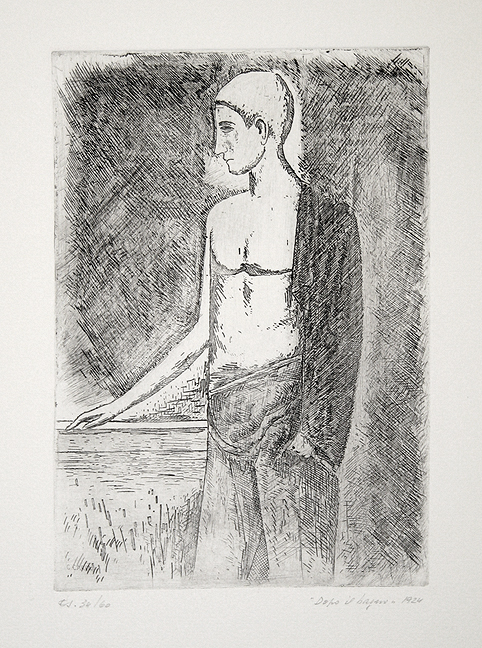Carlo Carrà
( Italian, 1881 - 1966 )

La Casa dell' Amore, 1922
( The House of Love )
Inventory # 51669
|
Original etching and drypoint on copperplate paper. Signed in the plate "C. Carrà," lower left. Inscribed in pencil "ES. 34/60, La Casa dell' Amore II 1924" in the lower margins. An impression from the edition of 60 for the portfolio "Opera grafica di Carrà," aside from an edition of 25 printed in 1924, and an edition of 10 printed in 1951. Published by De Tullio di Milano, 1971. In excellent condition, framed with conservation materials. |

Dopo il Bagno, 1920
( After the Bath )
Inventory # 51668
| Original etching and drypoint on copperplate paper. Signed in the plate, "C. Carrà" lower left. Inscribed in pencil, "ES. 34/60, Dopo il Bagno 1924" lower margin. An impression from the edition of 60 for the portfolio "Opera grafica di Carrà," aside from the edition of 25 printed in 1924, 2 artist proofs, and a posthumous edition of 70 printed in 1971. Published by De Tullio di Milano, 1971. In excellent condition. In 1899-1900, Carrà was in Paris decorating pavilions at the Exposition Universelle, where he became acquainted with contemporary French art. He then spent a few months in London in contact with exiled Italian anarchists, and returned to Milan in 1901. In 1906, he enrolled at Brera Academy (Accademia di Brera) in the city, and studied under Cesare Tallone. In 1910 he signed, along with Umberto Boccioni, Luigi Russolo, Giacomo Balla, Gino Severini and Filippo Marinetti the Manifesto of Futurist Painters, and began a phase of painting that became his most popular and influential. Carrà's Futurist phase ended around the time World War I began. His work, while still using some Futurist concepts, began to deal more clearly with form and stillness, rather than motion and feeling. Carrà soon began creating still lifes in a style he, along with Giorgio de Chirico, called "metaphysical painting". In the 1920s and 1930s, the metaphysical phase gave way to a much more sombre style, which he perfected throughout his life. He died in Milan in 1966. |
|
|

|
|
while thie rare graphic works is available.